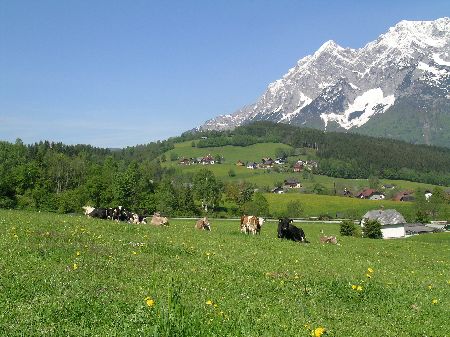Although economic calculations show that pasture farming can reduce feed costs compared to preserved feed, a decline in pasture farming and a switch to half-day or hourly grazing for dairy cows can be observed in Central Europe. The advantages of pasture farming are undisputed if the behavior of the animals is used as a benchmark for the animal welfare of a husbandry system. In contrast, high individual animal performance cannot be achieved with all-day grazing. The reasons for this are the limited nutrient density, the seasonal fluctuations in nutrient concentration and the difficulty of targeted supplementary feeding as well as the physical and physiological limits in pasture feed intake and the climatically-related fluctuations in feed intake.
However, since pasture farming is to be increasingly promoted in the future, the question of targeted and optimized supplementary feeding plays a crucial role in reducing the problems mentioned above and the sometimes quite considerable protein oversupply. The research project attempts to investigate this question and find an answer using different compositions of pasture rations, with a full-pasture variant as a control group.
Supplementary feeding to pasture can pursue various goals:
- Improving the nutrient supply of higher-yielding cows
- Improvement of milk ingredients
- Compensation for fluctuations in nutrient supply
- Reducing the metabolic burden on cows
Consequences for the project - questions to be clarified:
- What are the limits of daily milk production in the Alpine region when fed solely on pasture?
- What milk yields per lactation can be achieved with restrictive concentrated feed supplementation when dairy cows are kept on pasture all day and exclusively fed on pasture during the growing season?
- What effect does a higher concentrate feed in addition to pasture feed have?
- Can you achieve a better nutrient supply for higher performing animals with concentrated feed and thus minimize the risk of developing ketosis?
- Can the ingredients be improved through targeted supplementary feeding compared to pasture feeding alone?
- Does the fatty acid pattern (omega-3 fatty acids) change when supplementing with different feedstuffs?
- Can supplementary feeding compensate for fluctuations in nutrient supply?
- Which feedstuffs are the ideal supplement to young green fodder that is rich in sugar and low in structure?
- How can you minimize an excessive drop in pH value in the rumen and thus the risk of acidosis?
- Which feedstuffs are suitable to compensate for the high N excess in the rumen and thus prevent the negative effects on fertility and claw health?
Experiment plan:
The aim of the project is to address the questions listed above and find solutions to the individual problems using different supplementary feedstuffs, with the feeding remaining almost the same.
This issue will be dealt with intensively over a period of 3 years with a herd of 12 dairy cows. These 36 (3 years x 12 animals / year) animals are selected from the herd of the Raumberg-Gumpenstein LFZ and, in order to make optimal use of the pasture feed, should calve in the months of January to March if possible. The cows are put into the trial 10 days before the calculated calving date. All cows are fed the same way until the 56th day of lactation, some of which falls into the winter feeding period. The animals are then divided into 4 groups of 3 cows each, which results in a number of 9 animals per group in 3 years.
From the beginning of the growing season, the animals from all four groups go to pasture together. Since it is also a question of consistently reducing the use of resources and thus also working time and, in addition, the quality of the feed on the pasture should be as consistent as possible, only intensive standing pasture (short grass pasture) or intensive rotational pasture are possible as pasture forms. After preliminary work on short-grass pasture had already been carried out last year, this form of pasture was used.
Further information on project management can be found in the database for research and sustainable development (Dafne) -> Link







